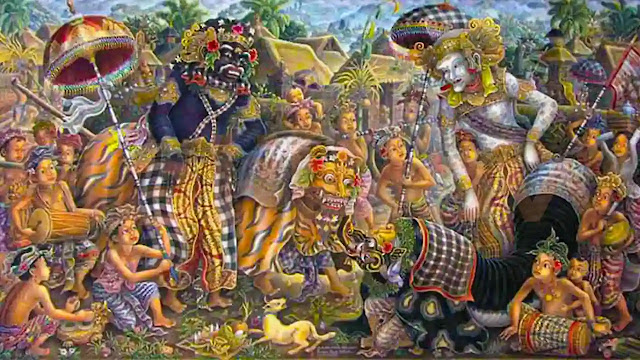Traditional Balinese Dances – Mahabharata is a masterpiece story that is very famous all over the world. This story is divided into 18 parts or what is often referred to as Asta Dasa Parwa.
These eighteen parvas tell of the origins of the Bharata family until the Pandavas enter heaven. His stories were then adapted into dance performances in Bali.
Traditional Balinese Dances
Citing scientific work from I Wayan Budiarsa, Postgraduate Program in Art Studies, ISI Denpasar Doctoral Program entitled Epos Mahabharata as a Source for Balinese Dance plays, there are several Balinese dances that take the story of the Mahabharata.
1. Wayang Wong Parwa
Wayang Wong Parwa is a classical dance drama art that uses stories from 18 Parwa or parts of stories in the Mahabharata. All dancers use clothing and make-up but do not wear masks, except for clowns. This dance art uses a combination of Kawi language and Balinese language during its performance.
Wayang Wong experienced a golden age when Bali was ruled by King Dalem Waturenggong of Gelgel, around the 15th century. In 1885, the families of the King of Gianyar were exiled to Nusa Penida after being defeated by Raya Klungkung.
During their exile, they created a dance-drama performance that was similar to Wayang Wong, but actually took the story of the Mahabharata. This dance drama was later called Parwa or Wayang Wong Parwa.
2. Sendratari
Ballet stands for dance art and drama, because it involves many dance artists to percussion or gamelan. This performing art is known since 1960.
This dance drama is quite popular. The show is regularly staged at the Bali Arts Festival. Some of the stories raised are stories from the Mahabharata such as Duryodhana Falls, Drupadi Competition, Lebur Dwarawati, Bhima Dadi Caru, and others.
3. Satya Brasta Balinese Dance
In 1989, an artist I Nyoman Stories created a dance called Taru Satya Brasta. This dance tells the story of Karna’s battle with Gatot Kaca in the Bharatayudha war.
The story, which is part of Karna Parwa, begins when Krishna learns that Arjuna is in danger of being killed by Karna’s powerful weapon Konta. Krishna then asked Gatot Kaca to come down to the battlefield to destroy the Kauravas.
This forced Karna to release Konta’s weapon to kill Gatot Kaca. As a result, Karna did not kill Arjuna, because Konta’s weapon could only be released once.
4. Legong Kraton
This dance was created by the maestro of classical Balinese dance named Ni Ketut Arini SST, together with his accompaniment, I Wayan Sinti, in 1990. This dance was created in the context of the Gong Kebyar Adult Festival at the Bali Arts Festival, as an ambassador for Badung Regency.
This dance is based on the story of Arjuna Wiwaha, telling the story of an angel named Dewi Supraba who was sent by Lord Indra to accompany Arjuna. It aims to find out the weakness of a powerful giant named Prabu Niwatakawaca.
Dewi Supraba pretended to be the giant’s wife. The giant reveals his weakness is at the base of the tongue.
Dewi Supraba then told this to Arjuna, and immediately raised a bow to shoot at the base of King Niwatakawaca’s tongue. The giant was killed at the hands of Arjuna.
5. Wiranjaya Dance
This type of kekebyaran dance was created by artists from Buleleng Regency, I Putu Sumiasa and I Ketut Merdana, in 1957. This dance uses two dancers with a burden of character (a dance that depicts male and female characters, which can be seen from the costumes) which tells the story. about Nakula and Sahadeva as sons of Pandu.
In addition to a duet of two dancers, this dance is also performed in groups consisting of two groups of male and female dancers. This dance material is usually a companion for the Adult Kebyar Gong Parade.
The taking of Mahabharata stories in several dance arts in Bali shows that the masterpiece story is very influential on the development of performing arts in Bali. Apart from being a source of dance drama plays, the Mahabharata story is also a literary work that is inherited in the form of kidung or kekawin.
